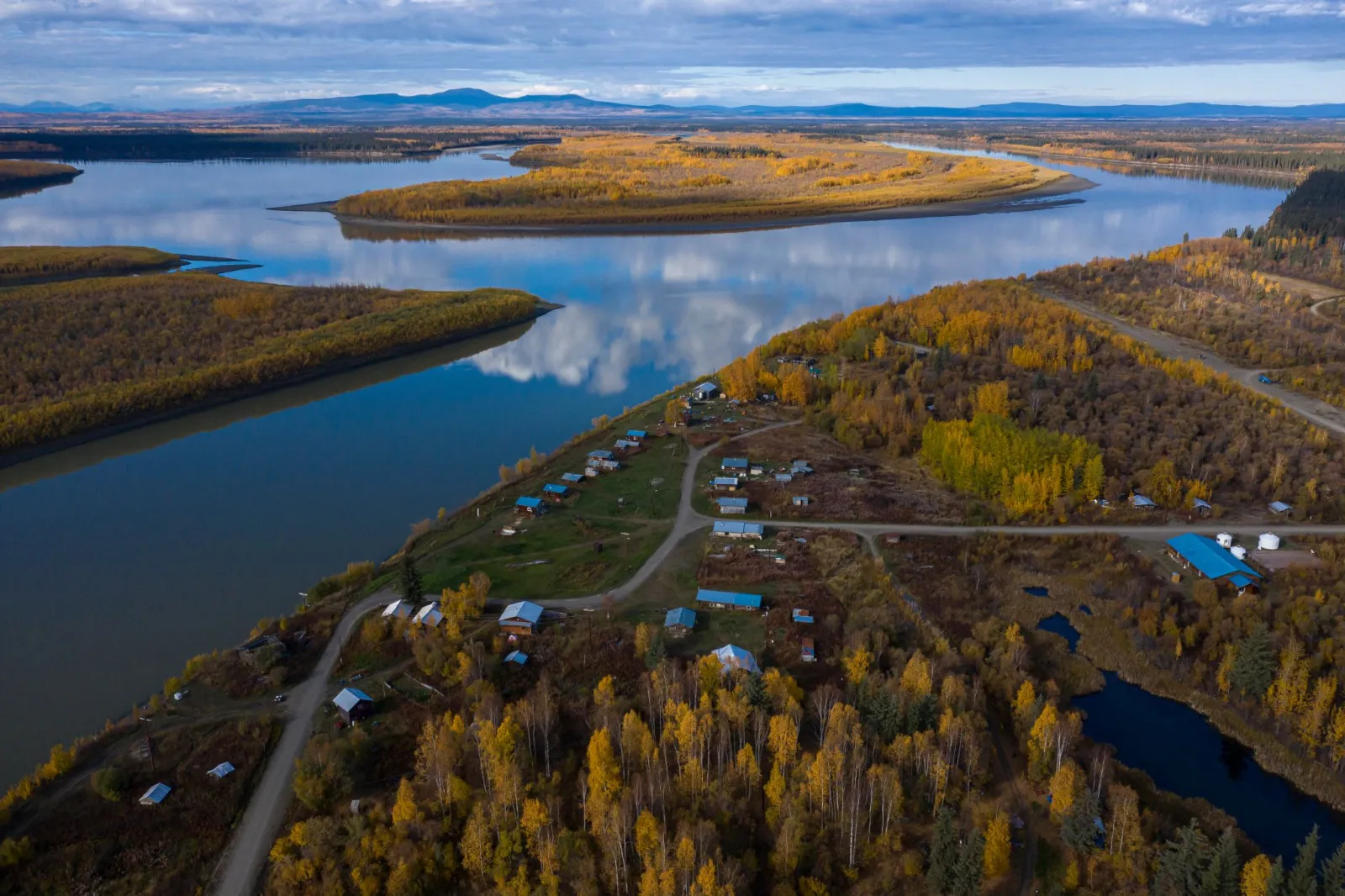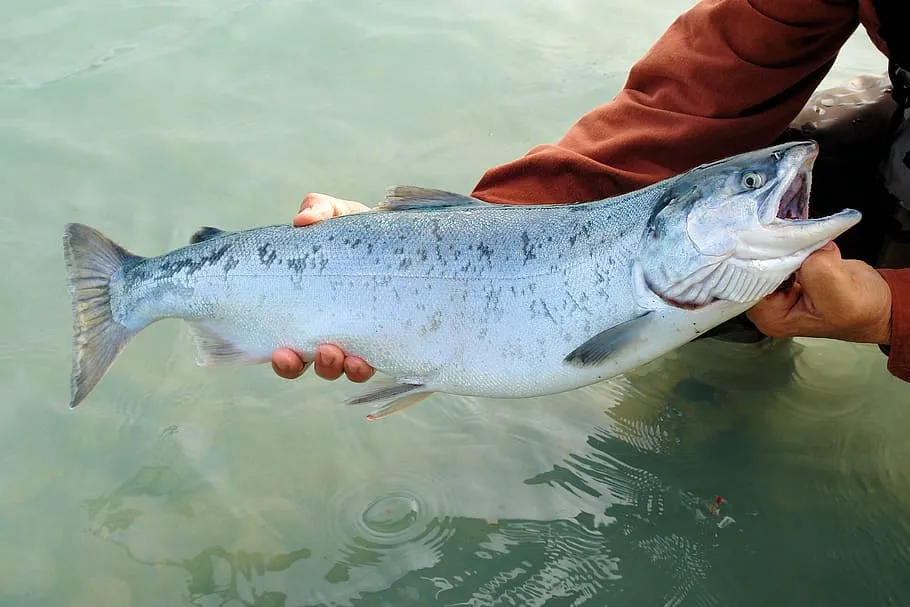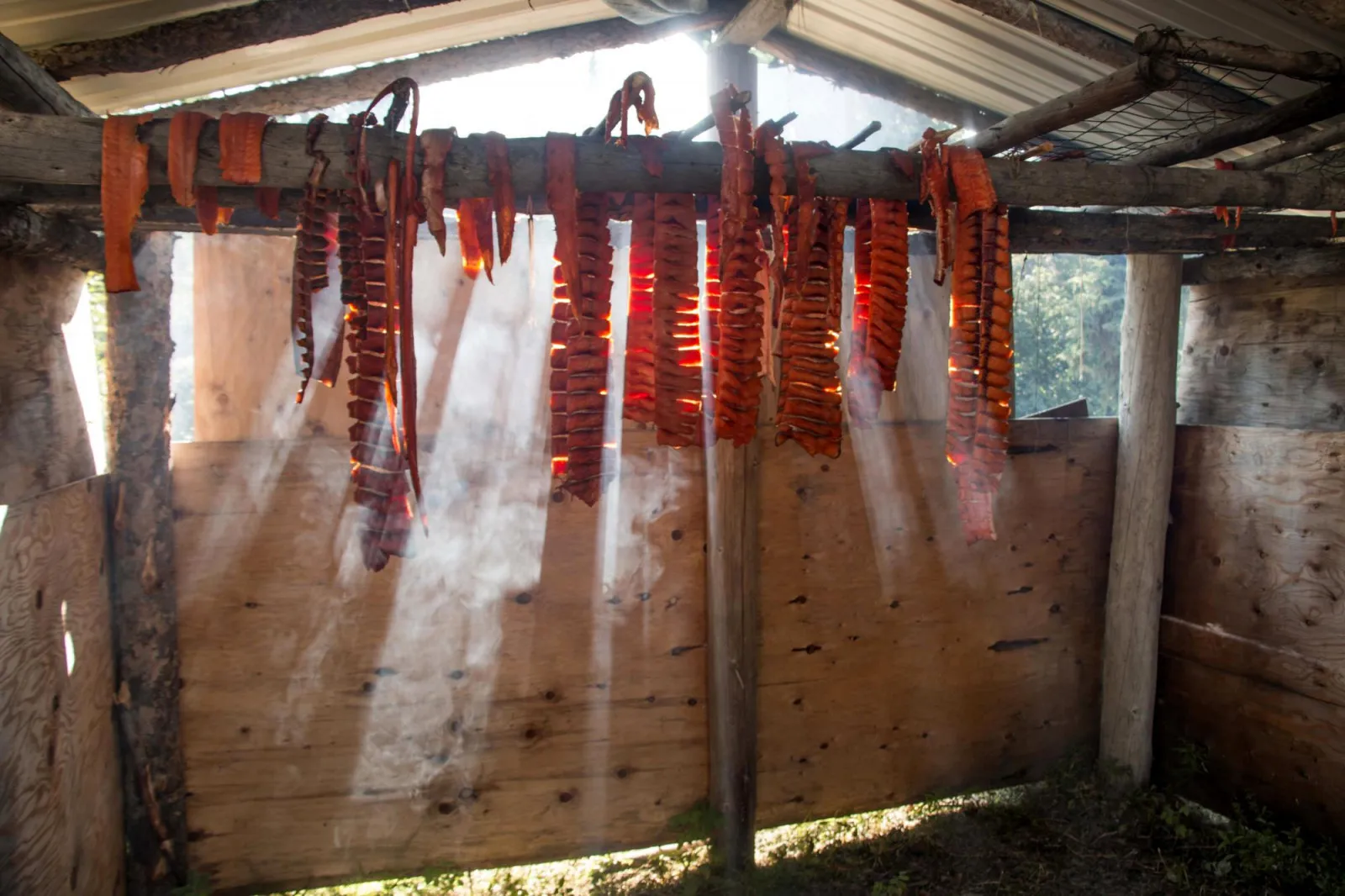Alaska, the land of majestic glaciers and pristine wilderness, has long been renowned as the salmon paradise of the world. More than just a vital food source, salmon is deeply intertwined with the culture, history, and spiritual life of Alaskans, especially its Indigenous communities. Catching and preserving salmon is not merely a survival skill but an art form, an integral part of this region’s unique cultural heritage.
Alaska Salmon Season: The Golden Time to Experience
Alaskan summers, from May to September, mark the time when salmon migrate from the Pacific Ocean upriver to spawn. This is also the peak salmon fishing season, attracting locals and tourists alike. Each salmon species has its own migration period, creating a diverse and extended fishing season.
King salmon (Chinook), the largest and most prized, typically arrive earliest in the summer. They are followed by sockeye salmon in mid-summer, and finally chum, pink, and coho salmon in late summer and early fall. This variety provides continuous fishing opportunities and the chance to savor the distinct flavors of each salmon species.
Salmon fishing locations in Alaska are abundant, ranging from major rivers like the Yukon, Kenai, and Copper River to smaller streams scattered throughout the region. Each location offers unique experiences and challenges, catering to different preferences and skill levels. Visitors can choose guided salmon fishing tours or explore remote spots independently, enjoying the breathtaking natural surroundings.
Traditional & Modern Alaskan Salmon Fishing Techniques
Alaskans have developed diverse salmon fishing techniques, blending tradition and modernity. For Indigenous communities, salmon fishing is not just an economic activity but also holds deep cultural and spiritual significance. They employ traditional methods passed down through generations, demonstrating respect for nature and its bounty.
Traditional Salmon Fishing:
- Net Fishing: Nets are the most common salmon fishing tool, particularly gillnets and seine nets. Indigenous people often craft nets from tree bark, animal sinew, or natural fibers, showcasing their ingenuity and connection to nature.
- Angling: Angling is a manual and patient salmon fishing method. Fishers use rods made of wood or bamboo, combined with lines and handmade hooks. Bait can include insects, salmon eggs, or artificial lures.
- Trapping: Salmon traps are passive fishing devices that utilize river currents to guide fish into enclosures. Traps can be made from wood, stone, or netting, varying in shape and size depending on the terrain and target species.
- Spearing and Harpooning: Using spears and harpoons to catch salmon requires skill and agility. Hunters typically stand on riverbanks or small boats, waiting for salmon to swim close before swiftly striking their target.
Modern Salmon Fishing:
- Rod and Reel with Lures: Modern fishing rods with strong lines and reels enable anglers to easily control and land large salmon. Artificial lures, available in various colors, shapes, and sizes, mimic salmon’s natural prey, enhancing fishing success.
- Motorboats and GPS: Motorboats allow for rapid travel to promising salmon fishing spots on rivers or the ocean. GPS devices and fish finders help locate salmon and optimize the fishing process.
- Fly Fishing: Fly fishing for salmon is a sporting and artistic angling method demanding high skill and finesse. Anglers use specialized fly rods, fly lines, and handcrafted or commercially made artificial flies to attract salmon.

Tips for Preserving Fresh Alaskan Salmon
Freshly caught salmon needs proper preservation to maintain its flavor and nutritional value. Alaskans have developed traditional salmon preservation methods that are both effective and create unique culinary specialties.
Traditional Salmon Preservation Methods:
- Drying: Drying is the simplest and most common salmon preservation method. Salmon fillets are salted (or unsalted, depending on preference) and hung on racks to dry under sunlight and natural wind. Drying reduces moisture content, inhibiting bacterial growth and extending shelf life. Dried salmon has a rich, chewy flavor and can be stored for months.
- Smoking: Smoking salmon is a unique preservation method that imparts a distinctive and alluring flavor. Salmon is salted and seasoned, then smoked using natural wood (often alder or applewood). Smoke not only preserves the fish but also creates a delicious smoky flavor and appealing color. Smoked salmon is a renowned Alaskan delicacy, popular worldwide.
- Salting: Salting is a simple and effective salmon preservation method. Salmon fillets or whole fish are thoroughly coated in coarse salt, then placed in barrels or containers and stored in a cool, dry place. Salt draws out moisture and inhibits bacterial growth, extending salmon’s shelf life. Salted salmon can be used in various dishes or eaten directly with bread and vegetables.
- Natural Freezing: During Alaska’s frigid winters, people utilize low temperatures to naturally freeze salmon. Fresh salmon is placed outdoors or in natural ice cellars, where sub-zero temperatures rapidly freeze the fish, preserving its freshness for extended periods. This method helps preserve salmon for winter and times of food scarcity.
Modern Salmon Preservation Methods:
- Flash Freezing: Flash freezing technology freezes salmon rapidly, creating small ice crystals that do not damage fish cell structure. This method preserves the flavor, color, and nutritional quality of fresh salmon. Flash-frozen salmon can be stored in home freezers or industrial freezers for months.
- Canning: Canning salmon is an industrial preservation method that extends shelf life and facilitates transportation and consumption. Salmon is processed, canned, and sterilized, ensuring food safety and preserving its characteristic flavor. Canned salmon is a widely available product, easy to purchase and use.
- Vacuum Sealing: Vacuum-sealing salmon removes air, preventing oxidation and bacterial growth. Salmon is packaged in vacuum-sealed bags and stored in refrigerators or freezers, extending freshness and maintaining product quality.

Alaskan Salmon Cuisine: Flavors of the Frozen Land
Alaskan salmon is not only a vital food source but also the primary ingredient in the region’s unique and diverse cuisine. From traditional Indigenous dishes to modern culinary creations, salmon always takes center stage, delivering a distinctive and unforgettable flavor.
Traditional Salmon Dishes:
- Smoked Salmon: Smoked salmon is Alaska’s most famous traditional dish. Smoked with alder or applewood, it boasts a rich smoky aroma, tender, sweet, and flavorful meat. It’s often enjoyed with bread, salad, or grilled vegetables.
- Dried Salmon: Dried salmon is a crucial food staple for Indigenous people during winter. Dried salmon is salty, chewy, and nutrient-rich. It can be eaten directly, grilled, fried, or used in soups and stews.
- Akutaq (Eskimo Ice Cream): Akutaq is a unique traditional Eskimo dessert made from animal fat (typically reindeer or seal fat), berries, and dried or fresh salmon. This ice cream has a rich, sweet, and slightly fishy flavor, offering a novel and intriguing culinary experience.
- Salmon Soup: Salmon soup is a warm and nourishing dish, especially popular during cold winters. Soup is made with fresh or smoked salmon, combined with potatoes, onions, carrots, and other vegetables. This soup provides essential energy and nutrients during harsh weather.
Modern Salmon Dishes:
- Salmon Sashimi and Sushi: Salmon sashimi and sushi are Japanese dishes loved worldwide, and Alaskan salmon is an ideal ingredient. Fresh Alaskan salmon is rich in omega-3 fatty acids and has an appealing color, delivering excellent flavor to sashimi and sushi.
- Pan-Seared Salmon Steak: Pan-seared salmon steak is a simple, quick dish that retains the fresh flavor and nutritional value of salmon. Salmon is pan-seared with a little olive oil, seasoned simply with salt, pepper, and lemon, creating a light and nutritious meal.
- Salmon Salad: Salmon salad is a light, refreshing, and nutritious dish. Grilled, smoked, or pan-seared salmon is combined with greens, avocado, cherry tomatoes, and salad dressing, creating a balanced and appealing meal.
- Salmon Pasta: Salmon pasta is a fusion of Italian cuisine and Alaskan ingredients. Salmon is sautéed with cream, white wine, onions, and spices, then mixed with pasta, creating a rich, flavorful, and satisfying dish.

Conserving Alaskan Salmon: Actions for the Future
Alaskan salmon is not only a valuable natural resource but also an integral part of the region’s ecosystem and culture. However, as the original article mentioned, climate change and human activities are threatening salmon survival. Rising ocean temperatures, environmental pollution, and overfishing have reduced migrating and spawning salmon numbers, severely impacting Alaskan livelihoods and ecosystems.
To conserve Alaskan salmon for future generations, decisive and coordinated actions are needed from governments, communities, and individuals. Conservation measures include:
- Mitigating Climate Change Impacts: Reducing greenhouse gas emissions, using renewable energy, protecting forests and natural ecosystems to slow down climate change.
- Sustainable Salmon Fishery Management: Controlling fishing quotas and seasons, implementing measures to protect juvenile and spawning salmon, promoting environmentally friendly fishing practices.
- Protecting Salmon Habitat: Preventing water pollution, protecting riparian forests and salmon spawning grounds, restoring degraded ecosystems.
- Raising Public Awareness: Educating about salmon’s value and the importance of conservation, encouraging everyone to participate in protecting this precious species.
Conclusion:
Catching and preserving fresh Alaskan salmon is not just an economic activity but also a cultural, historical, and spiritual aspect of life for the people of this region. Discovering traditional fishing techniques, unique preservation methods, and savoring distinctive salmon cuisine offers visitors unforgettable experiences and a deeper understanding of Alaska. However, facing challenges from climate change and human activities, conserving Alaskan salmon is a shared responsibility to ensure this precious species continues to thrive and benefit future generations. Let’s act together to protect Alaska’s “silver treasure” and preserve this region’s unique cultural heritage.